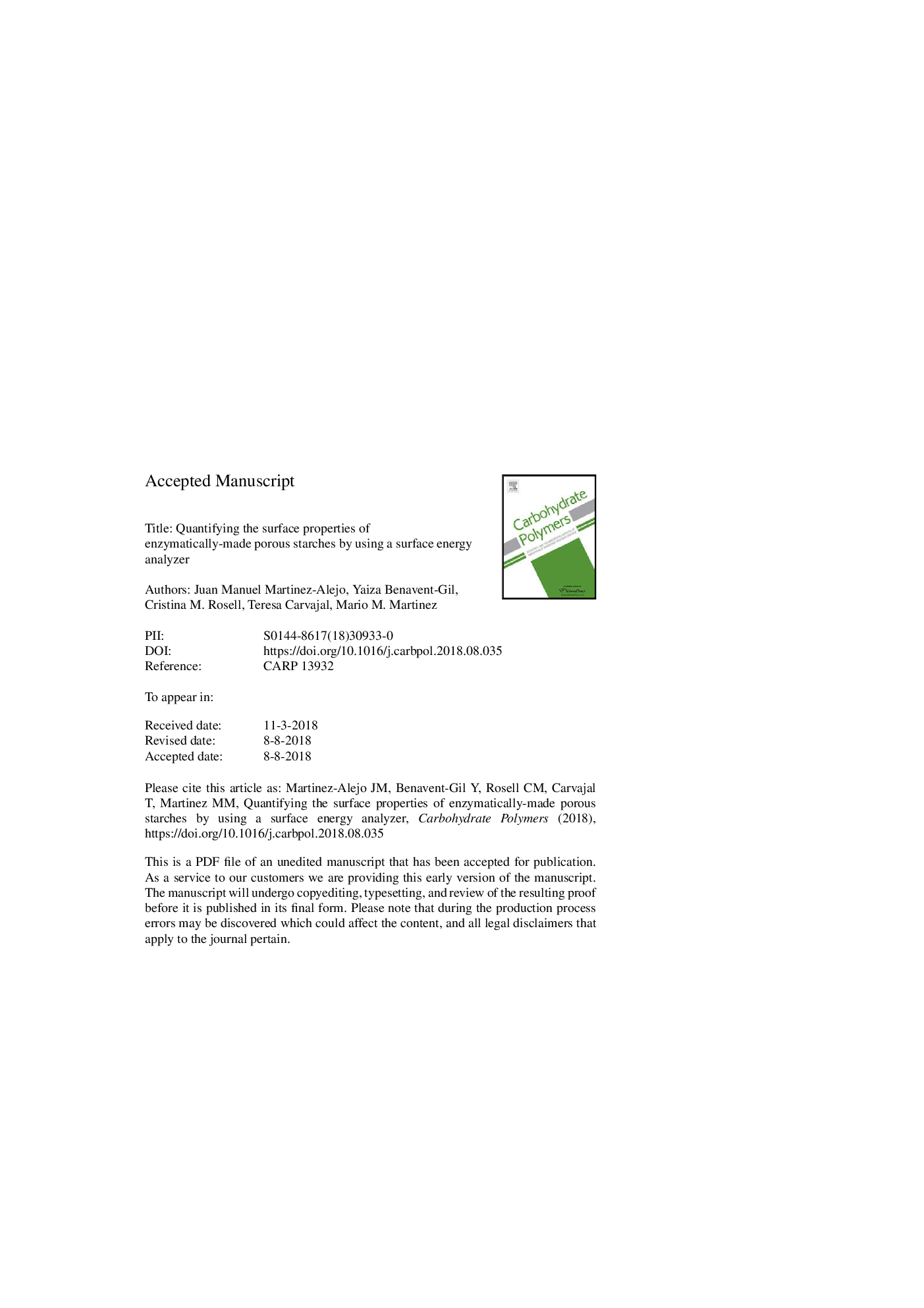| Article ID | Journal | Published Year | Pages | File Type |
|---|---|---|---|---|
| 7781078 | Carbohydrate Polymers | 2018 | 20 Pages |
Abstract
The behavior of starch during processing and its performance in products is influenced by the surface energetics/structure of the constituent particles. This work investigates the effect of enzymatically-produced porous maize starch particles on their energetic surface properties using inverse gas chromatography-based surface energy analysis (SEA). Three modified maize starch samples treated with amylase (AM), glucoamylase (AMG) and cyclodextrin-glycosyltransferase (CGT), were used for the study. The dispersive surface energy varied from 36.71 (native) to 43.34âmJ/m2 (AMGâ<âCGTâ<âAM). Enzyme catalysis resulted in porous starches with a more acidic (AMG) and a more basic (AM) surfaces. CGT exhibited similar acid-base balance as native starch but with higher concentration of active sites on the surface. This is the first study on the surface energy of enzymatically-treated porous starch materials using SEA, revealing significant information regarding the surface interactions that can affect performance of food and pharmaceutical products.
Related Topics
Physical Sciences and Engineering
Chemistry
Organic Chemistry
Authors
Juan Manuel Martinez-Alejo, Yaiza Benavent-Gil, Cristina M. Rosell, Teresa Carvajal, Mario M. Martinez,
